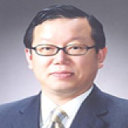n-Butyl-α-D-fructofuranoside Isolated from Ulmus davidiana Enhances Nrf2 Activity Through Activation of JNK.
Märksõnad
Abstraktne
BACKGROUND
The root bark of Ulmus davidiana Nakai (Ulmaceae), a traditional Korean medicinal plant, is used for treating inflammatory diseases.
OBJECTIVE
We investigated the Nrf2-activating effect of U. davidiana and identified a novel Nrf2 activator from its constituent compounds.
METHODS
Cytotoxicity was measured by MTT assay, and the Nrf2 activity was examined by luciferasereporter assay and western blot analysis. The expression of Nrf2-dependent antioxidant genes was estimated by RT-PCR. The signal pathway related to Nrf2 activation was analyzed by treating specific signaling inhibitors. Anti-inflammatory effects were determined using an NO assay and western blot analysis.
RESULTS
Ulmus davidiana and its constituent compounds, including catechin-3-O-α-L-rhamnopyranoside, α-nigerose, n-butyl α-D-fructofuranoside (NBF), and procyanidin B3, enhanced the transcriptional activity of Nrf2. Of these compounds, only NBF possessed a distinctive structure and exhibited ROS-independent Nrf2 activation. In addition, NBF significantly increased the nuclear translocation of Nrf2 and the expression of Nrf2-dependent detoxifying enzymes, including HO-1 and NQO-1, in dose-dependent manner. The Nrf2 activation induced by NBF was mediated by the phosphorylation of JNK. Consequently, pretreatment with NBF inhibited the LPS-induced expression of pro-inflammatory genes.
CONCLUSIONS
To the best of our knowledge, this is the first study to report on the Nrf2-activating effect of U. davidiana and NBF. Given the importance of Nrf2 as a negative regulator in various inflammatory diseases, NBF could be considered as a novel candidate for the prevention and treatment of inflammatory diseases.


